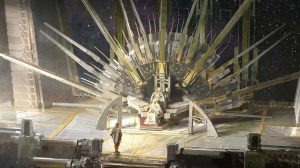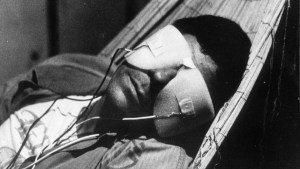Either I’m immune to horror games or they’re just not scary anymore. I’ve played them for years now, yet few manage to make me squirm, sweat, or fear that the horror will jump out of the screen. If this were 10 years ago, the obvious fault in these games would be cheap jump scares, but this is surprisingly no longer the case. While it’s more popular in the indie horror realm, it is seeping into the mainstream and contaminating it. Here is the reason most games that are meant to scare you keep failing at it: it’s the death of horror that is stealthy by nature.
Videos by ComicBook.com
Survival horror perfected by Silent Hill and Resident Evil drastically changed when Amnesia: The Dark Descent came out in 2010. From that point on, you were no longer allowed to fight back against monsters. Limited resources and inventory systems grew more scarce, replaced by fetch quests and hiding. While Frictional Games are masters at note-collecting storytelling with walking sim gameplay, most replicating these horror masterpieces fall at the atmosphere hurdle. Amnesia continues to claw at me for a tense environment, giving me a gnawing and nauseating feeling that somehow manages to deliver every time I launch. But this atmosphere is severely lacking across the developer pool.

RELATED: 5 Best Immersive Horror Games (Including The Midnight Walk)
My frustration peaked when I played Five Nights at Freddy’s: Secret of the Mimic, which featured the same puzzle on a loop, generators that you needed to activate while avoiding the Mimic, and chase sequence after chase sequence. The scripted moments from indie horror have gotten so stale that you’d think I was writing up a thesis — that’s how deadpan my face was while playing. I genuinely haven’t panicked or gotten scared by a game in a hot minute, and I’ll happily blame stealth for this.
Forcing you to slow down doesn’t make a game scary. It Steals and even Dark Deception demonstrate this perfectly, for you have no choice but to continuously run from the thing chasing you. But a game like this offers no break, meaning there’s little breathing room, so panicking is a surety. Examples of games that offer an excruciatingly slow build to a terrifying climax are Amnesia, Penumbra, and most Chilla’s Art games. Here, they invite you in with their mystery and intrigue, and punish you for being interested.
The problem with walking sims that have you flee from a threat is that the horror becomes stale too fast. Most games don’t make effective use of H.P. Lovecraft’s fear of the unknown. Horror fizzles out too fast, as the thing you’re supposed to be scared of isn’t so much lurking in the dark, but in your face, demanding to be seen. Because of this, the scare factor becomes non-existent the moment you die. Of course, death in a horror game is to be expected, but here is where challenge and unforgiving mechanics are put in place to make you want to keep playing. Think of any Puppet Combo title or Alien: Isolation, where you need to stealthily move from point A to B without alerting the enemy to your position. The threat stays at its peak and never falters. This is mostly helped by the immersive atmosphere, clever AI, and overall challenge the game provides.

It’s gotten to the point where gamers want to make their own entertainment by hopping into a match of Lethal Company or R.E.P.O., and stick to watching their favorite YouTuber play a horror game just to enjoy the storytelling and skip the infuriating and mundane tasks each game demands you complete to progress.
Many horror games aren’t scary, nor are they a challenge. You see the scary monster and are told to hide from it. You’re given a flashlight with the world’s worst batteries (thanks, Outlast) and tasked to turn on generators, find random pieces to a puzzle, and hide in lockers to avoid a Game Over. While Outlast made these core gameplay mechanics popular, it introduced a unique rule that played a huge part in crafting its immersive atmosphere: the camcorder. The same is achieved with Alien: Isolation‘s motion detector. Horror games have taken this standard formula but failed to add anything interesting. I’m not expecting something new with every title, but where some horror games fail and others are successful is the decision to use the same formula without changing a thing.

There are some great examples of horror where you have to hide from a persistent threat. At Dead of Night is a point-and-click FMV adventure that features a ton of hiding, yet apprehension quickly builds from the unique enemy AI and interactable environment. Stay Out of the House is an anxiety-inducing game where you must collect items to help you plot your escape from confinement as a killer hunts you down. The Voidness uses a unique mechanic where the entire game is pitch black, and you must illuminate the landscape with your Lidar machine to make sense of your surroundings. Welcome to the Game hides the killers in the background, who punish those distracted by the disturbing dark web. Horror like this creeps up when you least expect it, hoping you’ll put your walls down so it can jump right in.
Red equals scary, lighting must be at the bare minimum, lockers are in abundance regardless of the setting, and the enemy patrols in the most basic pattern that’s easy to predict; this repetitiveness is what kills horror and makes it difficult to feel like an active participant who’s desperately trying to survive whatever hell they’ve found themselves in. A story could carry it over the finish line, but a lot are missing out on this crucial component, too. I’m not sure why every horror game has to make stealth compulsory and fill the landscape with hiding spots, but that has become the norm. Where has item management gone? Where’s the palpable atmosphere made up of an eerily lifelike sound design and terrifying monster designs? We’ve lost the horror and are left with just a game.

I’m a huge fan of puzzles in horror games, but repeating the same puzzle and tasks wherever it is you’re trying to escape from creates a husk that horror cannot fill, especially since so many games copy this concept. It’s bizarre why the repetitive stealth formula is so heavily used, but the idea of finding batteries, fuses, fixing generators, and hiding in lockers feels like filler that destroys any chance of having a strong and memorable atmosphere.
Sadly, my focus on horror has shifted to whether it has a good story, as I’m often underwhelmed by the gameplay and muted tone, where getting scared seems like a faraway dream nowadays. Something’s got to give, or we should just rename the genre completely to “Hiding Simulator,” that way we all know what kind of game we’re getting into.








